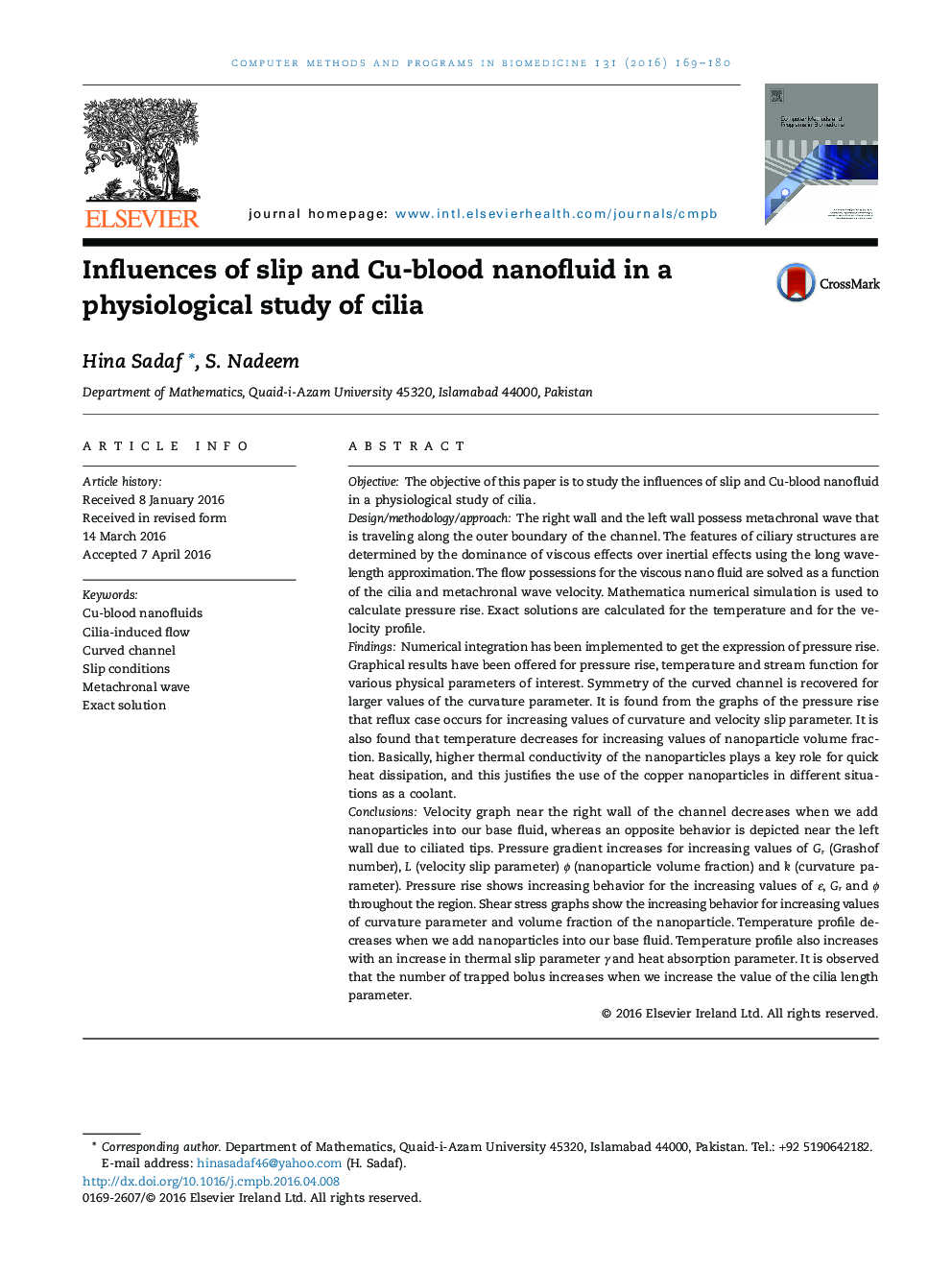| کد مقاله | کد نشریه | سال انتشار | مقاله انگلیسی | نسخه تمام متن |
|---|---|---|---|---|
| 469067 | 698284 | 2016 | 12 صفحه PDF | دانلود رایگان |
• Exact solution is calculated for the temperature and for the velocity profile.
• Temperature of the fluid decreases with an increase in the nanoparticle volume fraction φ.
• Temperature profile increases with an increase in thermal slip parameter γ and heat absorption parameter.
• Velocity profile in the center of the channel increases when we add nanoparticles in our base fluid.
• Pressure rise shows increasing behavior for the increasing values of Grashof number.
ObjectiveThe objective of this paper is to study the influences of slip and Cu-blood nanofluid in a physiological study of cilia.Design/methodology/approachThe right wall and the left wall possess metachronal wave that is traveling along the outer boundary of the channel. The features of ciliary structures are determined by the dominance of viscous effects over inertial effects using the long wavelength approximation. The flow possessions for the viscous nano fluid are solved as a function of the cilia and metachronal wave velocity. Mathematica numerical simulation is used to calculate pressure rise. Exact solutions are calculated for the temperature and for the velocity profile.FindingsNumerical integration has been implemented to get the expression of pressure rise. Graphical results have been offered for pressure rise, temperature and stream function for various physical parameters of interest. Symmetry of the curved channel is recovered for larger values of the curvature parameter. It is found from the graphs of the pressure rise that reflux case occurs for increasing values of curvature and velocity slip parameter. It is also found that temperature decreases for increasing values of nanoparticle volume fraction. Basically, higher thermal conductivity of the nanoparticles plays a key role for quick heat dissipation, and this justifies the use of the copper nanoparticles in different situations as a coolant.ConclusionsVelocity graph near the right wall of the channel decreases when we add nanoparticles into our base fluid, whereas an opposite behavior is depicted near the left wall due to ciliated tips. Pressure gradient increases for increasing values of Gr (Grashof number), L (velocity slip parameter) ϕ (nanoparticle volume fraction) and k (curvature parameter). Pressure rise shows increasing behavior for the increasing values of ε, Gr and ϕ throughout the region. Shear stress graphs show the increasing behavior for increasing values of curvature parameter and volume fraction of the nanoparticle. Temperature profile decreases when we add nanoparticles into our base fluid. Temperature profile also increases with an increase in thermal slip parameter γ and heat absorption parameter. It is observed that the number of trapped bolus increases when we increase the value of the cilia length parameter.
Journal: Computer Methods and Programs in Biomedicine - Volume 131, July 2016, Pages 169–180
